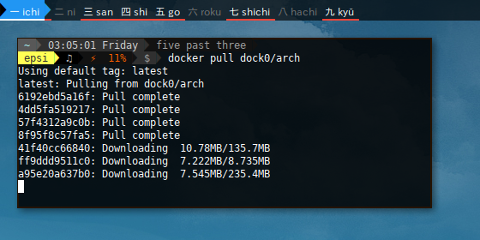

makepkg will soon be split into a library The -Dk and -Dkk options have been implemented to let Arch Linux users check the validity of sync and local databases, thus replacing the testdb tool, the output of the package's description is now correctly aligned for all locales, the lock file removal and signal handling have been improved, and there's a new ini parser for improving the parsing of the configuration.

files format with the -Fy option, as well as to search for files in sync repositories using either the -Fo or -Fs arguments. Pacman 5.0 is finally here after many months of development, during which its maintainers managed to add a great number of new features, such as support for running hooks before and after transactions, support for reading and syncing databases in the. This saved me on multiple occasions, when I didn’t pay enough attention to what Pacman was saying and rebooted the system, only to find everything completely broken.Arch Linux users received today one of the biggest updates in the history of the Linux kernel-based operating system for the built-in pacman package manager utility, which is used for installing, updating and removing packages from the distro. The log files are stored in /var/log/pacman.log, in case you need to undo some bad decision (adding/removing packages that you shouldn’t have, for example).
#ARCH LINUX PACKAGE MANAGER CODE#
Although this means that you don’t have the source code at hand, you can use asp to retrieve source files for pacman packages. The fact that pacman doesn’t compile the packages but instead installs binaries is quite important, since this makes it much faster and easier. The packages themselves are stored in tar archives, mainly containing the following: Pacman is written in C, because C kind of looks like a Pacman 😎. Pacman offers colorful output out-of-the-box – all you have to do to enable it (since it’s disabled by default) is to uncomment Color in /etc/nf.
#ARCH LINUX PACKAGE MANAGER FREE#
Good to prepend with -y.įeel free to chain these flags (mostly) however you wish to, to get the information you desire. List packages, whose names/descriptions matches a regex. List packages not found in the sync database. List, which package owns the specified file. Keep in mind that the flags are very important here, since there are a lot of possible things you might want to query. To install/upgrade packages, use the -S flag. Consult the manpage or the sources of this article if you wish to know more. There are some other action that can be performed, but they are not as useful as the ones above. View information about installed package(s). Pacman has various capital letter flags that determine the action that will be performed: Flag It allows for easy installation and management of packages. Pacman is a package manager, associated with Arch Linux and Arch-based distributions (like Manjaro).


 0 kommentar(er)
0 kommentar(er)
